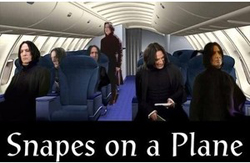 Why sound editing software can be your friend. One common problem with recording the human voice is sssssomething called ssssssibilance. If you didn’t already know what “sibilance” meant, my odd spelling above may have clued you in. It’s a sharp, biting hissing sound that happens whenever the recorded voice utters the “S” sound. You’ll be listening to the recording, and everything will sound great, until the speaker/singer utters the phrase “she’s a sensation,” and pierces your eardrums.
Why sound editing software can be your friend. One common problem with recording the human voice is sssssomething called ssssssibilance. If you didn’t already know what “sibilance” meant, my odd spelling above may have clued you in. It’s a sharp, biting hissing sound that happens whenever the recorded voice utters the “S” sound. You’ll be listening to the recording, and everything will sound great, until the speaker/singer utters the phrase “she’s a sensation,” and pierces your eardrums.
The good news is that you can use free sound editing software to fix this!
There are lots of reasons why this might happen, over-compression (see more info on compression here:Improve Or Ruin Your Audio With an Effect Called Compression and Vocal Compression Using Reaper’s ReaComp Effect Plugin), wrong kind of mic for that voice, too much reverb effect, etc. Just know that if you do any recording or audio editing of human voices, you will periodically be faced with sibilance that cannot make it onto the final version of the audio file. So what do you do?
You’ve may have heard of something called a “de-esser,” yeah? de-essers are effects that are designed to filter and tame sibilance, while leaving the non-sibilant part of the audio alone. If you are familiar with the range of human hearing and the use of EQ (equalization) tools in audio (see my article about EQ here: What is Equalization, Usually Called EQ?), you’ll know that people can only hear sounds that exist between the frequencies of 20 hertz (HZ) and 20,000 Hz.
In practical terms, most adults are going to have trouble hearing anything over about 13,000 Hz. What’s most interesting about this fact is that certain familiar sounds “live” at predictable frequencies. No it IS interesting! Don’t argue with me;).
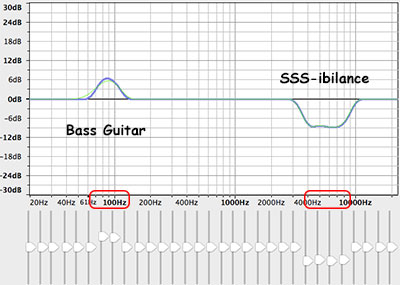 If we know, for example, that the “bass-y, boom- y parts of a bass guitar will most often be found around 80-100 Hz. So we can then we use an EQ to turn down (or up….but usually down….never mind) the bass by ONLY turning the volume down around 80-100 Hz. Likewise, high sounds like the sizzle of a high-hat, can be found hanging out around 6,000 Hz (or 6KHz for short). So if you knew that vocal sibilance mostly hung out between 4 KHz and 10 KHz, you would know where to start looking for your particular brand of hissiness so you could fix it.
If we know, for example, that the “bass-y, boom- y parts of a bass guitar will most often be found around 80-100 Hz. So we can then we use an EQ to turn down (or up….but usually down….never mind) the bass by ONLY turning the volume down around 80-100 Hz. Likewise, high sounds like the sizzle of a high-hat, can be found hanging out around 6,000 Hz (or 6KHz for short). So if you knew that vocal sibilance mostly hung out between 4 KHz and 10 KHz, you would know where to start looking for your particular brand of hissiness so you could fix it.
A de-esser is simply a tool – found in most sound editing software programs – that zeros in on a certain group of frequencies (like 4-10KHz or 5-8KHz, etc.) and will turn the volume down in that region, but ONLY when it gets TOO loud. Smart tool huh?
As long as the “s” sounds are normal for human speech, they are left untouched. But the instant they get unnaturally hissy, they’ll get turned down just enough to make them sound normal. It takes some playing with the settings to get this just right. Overdo, though, it and your singer/speaker will develop a lovely lisp.
If you don’t have a de-esser, a compressor, or an EQ (de-essing is really just a combination of compression and EQ), there is one sure-fire way to fix sibilance which is my first choice, especially if the audio is short, like in a podcast intro or a short song. Instead of treating the entire file as you would do with a de-esser, just LOOK at the audio in an editor.
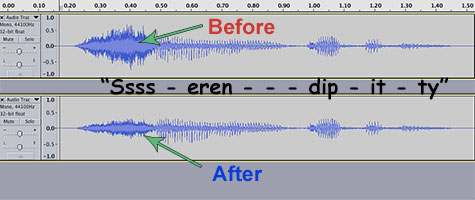 It’s so cool that we can use our eyes to edit audio now. Isn’t it? Sigh, OK I’m a geek. Anyway, you can usually see sibilance on a computer screen pretty easily, using any sound editing software available. The squiggly blobs get all bunched up and dark for a bit. In the picture, you can see the word “serendipity’ recorded. The blue blob at the beginning.
It’s so cool that we can use our eyes to edit audio now. Isn’t it? Sigh, OK I’m a geek. Anyway, you can usually see sibilance on a computer screen pretty easily, using any sound editing software available. The squiggly blobs get all bunched up and dark for a bit. In the picture, you can see the word “serendipity’ recorded. The blue blob at the beginning.
Just follow the cursor and when you hear the sibilance, you’ll likely see it as well. Now zoom into JUST the sibilant sound and highlight it. Use the editor’s volume control to turn down ONLY the “s.” Listen to the result and if that didn’t fix it all the way, or you gave the speaker a lisp, just “undo” and try again until you get it just right. Rinse and repeat for each offending sibilant sound, and voila! Your hissing snake problem is fixed!
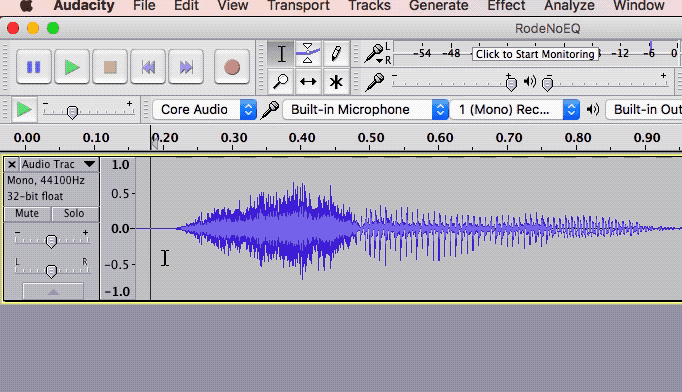
I recommend the latter method of fixing sibilance in your audio if the file is only a minute or two or less. For longer files (audio books, etc.) you’re probably better off using a de-esser.
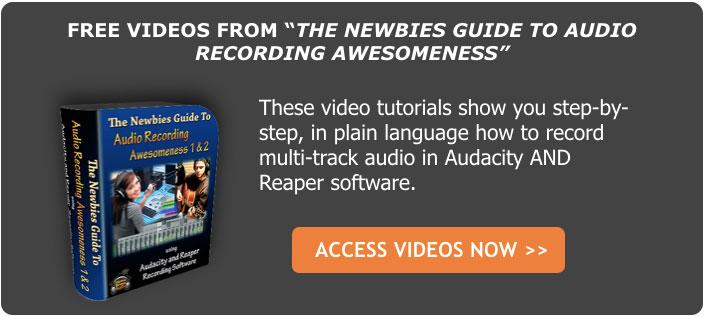
Recording Software
EZX Big Rock Drums By Toontrack
For those hard rock fans of the 70’s and the 80’s, who likes loud guitars and even louder drums. Bands like Led Zeppelin and Black Sabbath to name a few. Toontrack has an interesting offer to make with the release of the EZX Big Rock Drums.
Big Rock Drums features 5 new kits that are big and powerful, a total of 17 presets featuring phaser drums and delayed drums. It also features a Mayer kit with just a kick drum mic and mono overhead. One major kit, the Ludwig and Mayer Bros. was already around when some of these classics were made.
Read more here: http://www.musictech.net/2017/03/toontrack-ezx-big-rock-drums-review/
Free Sustained String Chords By Sonuscore
For those owning the full version of Native Instruments Kontakt Sonuscore has great news for you. They recently announced the release of a free orchestral sound library for NI Kontakt full version. Following the release of Orchestra Chords sound library late last year, the Sustained String Chords has a similar theme from the previous library promising more lightweight and user-friendly library of great sounding orchestral samples. In short, the two libraries can work together seamlessly.
For those wanting simplicity, Sustained String Chords features only one knob controlling the amount of reverb applied on the output. Yet enabling you to play as quickly as possible.
Read more here: http://bedroomproducersblog.com/2017/03/16/sonuscore-sustained-string-chords/
New Pack Beat Tools By Ableton Now Available
To all Push and Live 9 Suite users you can now take advantage of Ableton’s latest release, the New Pack Beat Tools. With samples, instruments and MIDI loops you can work around with. Targeting all Hip-Hop creators, beginner or experienced. This New Pack’s development was overseen by Sound Oracle, Mic Checkmate and Michele Darling, 3 of the best names in the industry. Featuring 102 instrument racks, 27 drum racks, 82 audio loops, 97 MIDI clips, and 15 effect racks, which is quite a number to help bring out your creativity, you will never run out of things to do with this New Pack Beat Tools from Ableton.
Read more here: http://www.musictech.net/2017/02/ableton-beat-tools/
The Making Of Sound Effect Tools By Cinetools
Cinetools will soon be releasing a new series of modern sound effects tools and palettes more specifically for the use of filmmakers. Cinetools is well known for designing unique sound effect for the film industry. From it first collection called “Otherworlds” creating that dark mysterious effects bringing color to productions with over 750 cinematic FX and audio beds of nonstop creation.
In this video, Cinetool lets us in on a sneak preview of what’s in store next for their upcoming release of Sound Effect Tools. Watch how they bring the character of every sound captured in this video.
Watch here: http://www.loopmasters.com/articles/3778